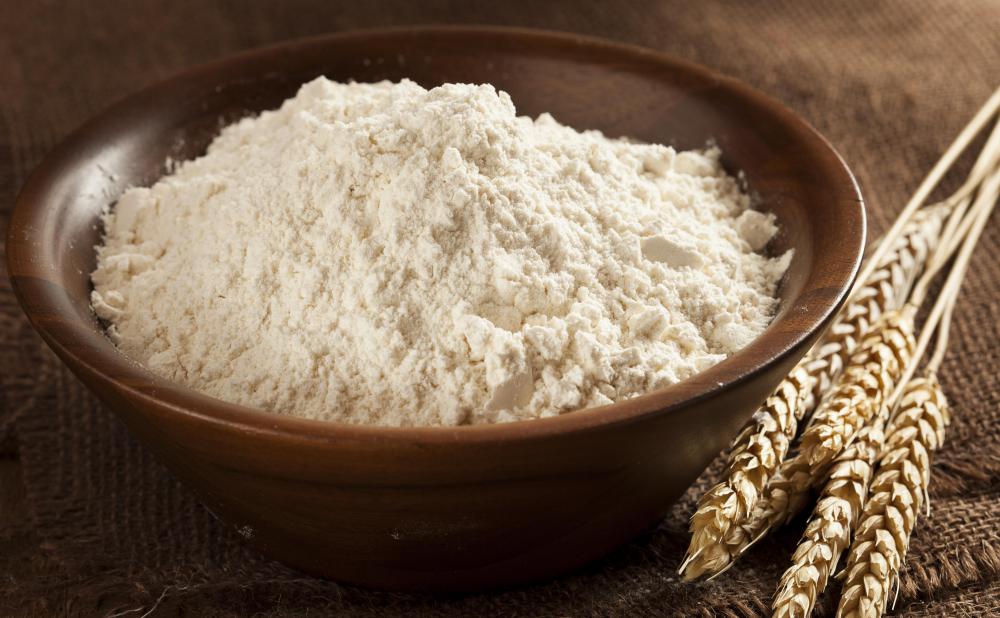At DelightedCooking, we're committed to delivering accurate, trustworthy information. Our expert-authored content is rigorously fact-checked and sourced from credible authorities. Discover how we uphold the highest standards in providing you with reliable knowledge.
What is Brown Rice Flour?
Brown rice flour is flour that has been ground from unhulled rice kernels, also known as brown rice. It can be used as a wheat flour substitute in many dishes, especially in combination with other flours. Since it is naturally gluten free, many gluten intolerant individuals use it for cooking projects. Natural food stores and some grocery stores stock brown rice flour, which can also be ground at home by cooks who own grain mills.
To make brown rice flour, a flour mill uses unhulled grains of any rice varietal. The grains are harvested and threshed to remove the inedible outer husk, and then allowed to dry so that they can be handled in the mill. Most mills use a more coarse grind, resulting in a slightly grainy, gritty flour, although some mills do grind it more finely. The milled flour is then ready for sale.

Like other whole grain flours, brown rice flour can go rancid very quickly, because of the natural fats and oils in the grain. It should be stored under refrigeration to avoid this. Most cooks also purchase the flour in small amounts, so that it will be completely used before it goes rancid. It should be stored in an airtight container in the refrigerator so that it will not collect moisture or odors from the fridge.

Individuals with gluten intolerance who are purchasing brown rice flour should be cautious. Many mills process grains that do contain gluten as well as gluten free products, meaning that there is a possibility of cross-contamination. In some cases, a mill may also cut brown rice with another flour to make it more versatile. Consumers should look for products that are clearly labeled “gluten free.”

The uses of brown rice flour are myriad. It can be used as a straight flour replacement in things like roux and other sauce thickeners, as well as dredges for foods. It can also be combined with other flours for baking projects such as bread, cookies, or pastries. This flour does not behave exactly like wheat, so cooks should be prepared to experiment with proportions and grain mixtures. It also lends a strong, nutty flavor to food that may not always be desired. Cooks who are concerned about this can use regular rice flour, made from grains that have been hulled. It tends to have a more mild flavor.
AS FEATURED ON:
AS FEATURED ON:
















Discussion Comments
Brown rice is not milled. This is good.
can carbs in gluten free products turn to sugar and cause problems?
coconut flour is better it is low in protein and low in carbohydrates. almond and walnut flour can raise uric acid. Another option is flaxseed flour or brown rice flour because it is low in protein and carbs. It is mainly for autistic, alzheimer, schizophrenia, ibs, colitis communities.
Another great gluten free flour is almond flour. It's high in protein but low in carbohydrates and sugar.
In addition, the taste is great too, and there are lots of recipes available that use it.
@anon35005, You're right there is a lot of things to look for when buying gluten free food. This article was helpful to me too.
This is good info. One often assumes a product is what it is listed. I find I am always finding new things to watch for in gluten free
Post your comments